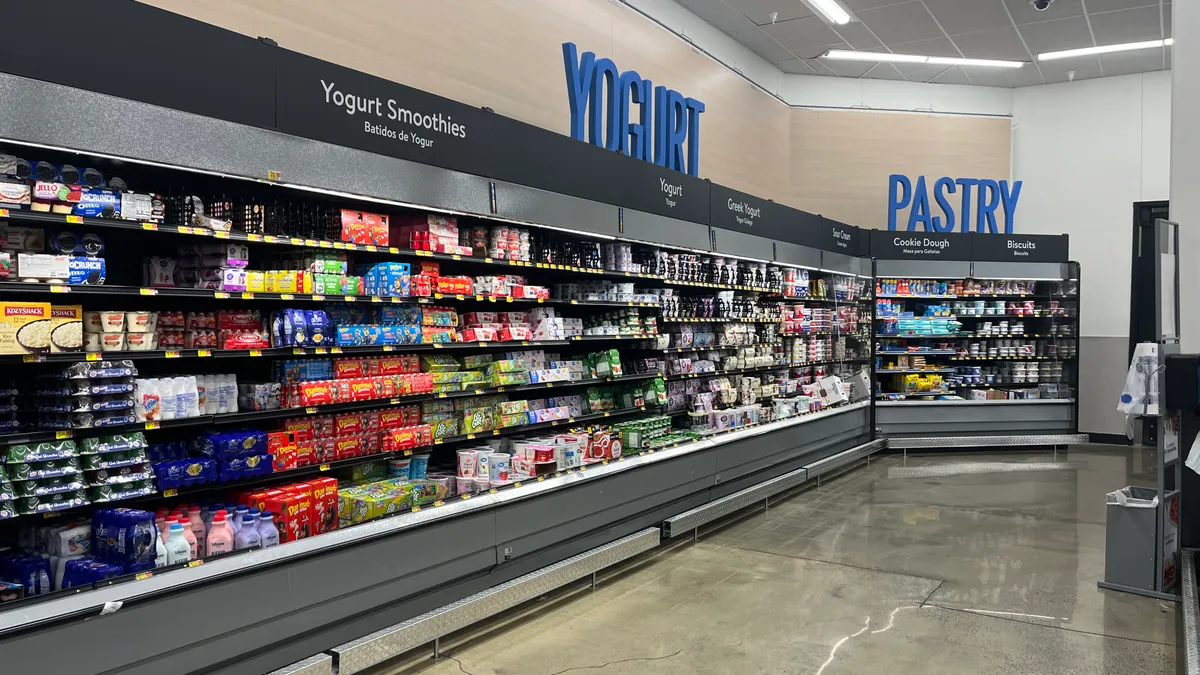Dive Brief:
- Grocery e-commerce sales dropped 10.5% in February compared with the same period last year, to $7.9 billion, as the value of the average order fell for all fulfillment channels, according to data released Wednesday by Brick Meets Click and Mercatus
- Pickup accounted for about 43% of online grocery sales, delivery claimed approximately 39% of the market and the ship-to-home segment notched a nearly 18% share.
- Traditional supermarkets recorded a significantly larger decline than Walmart in the average value of the pickup and delivery orders they processed, underscoring the powerful role the mass merchant plays in the digital grocery space.
Dive Insight:
While online grocery shoppers tended to spend less per order in February than they did a year ago regardless of the fulfillment option or merchant type they chose, the share of customers who used more than one method to receive orders during the month rose, Brick Meets Click found.
Delivery outperformed the pickup and ship-to-home segments in terms of order volume, according to the research, which is based on a survey of 1,755 adults the firm conducted on Feb. 28 and Feb. 29. The number of delivery orders rose 13% year over year, while pickup orders declined 7% and the ship-to-home channel saw a 3% reduction in order volume.
Overall, online grocery order volume was essentially unchanged in February compared with the same month in 2023, Brick Meets Click reported. The delivery segment’s share of the market grew, mainly because it brought in more monthly active users, while the pickup and ship-to-home segments both recorded fewer orders.
Pickup sales in February totaled $3.4 billion, a drop from $4.2 billion during the same month last year, while delivery sales ticked up to $3.1 billion. Sales in the ship-to-home segment, which includes digital grocery orders transported to customers by common carriers like FedEx and UPS, dropped to $1.4 billion.
The proportion of online grocery customers who indicated that they intended to place a second or third pickup or delivery order with the same retailer within a month, known as the repeat intent rate, fell by more than 8 percentage points in February, to about 56%. The gap between traditional grocers and mass retailers in terms of repeat intent rates grew to a record high of over 20%.
The data shows that fewer lower-income households, which Brick Meets Click defines as having annual income below $50,000, used a pickup or delivery service to buy groceries last month. The decline was considerably higher for delivery than for pickup.
Walmart saw a larger percentage decline than supermarkets in the number of shoppers in that income group who placed pickup or delivery orders. That divide is due in part to the fact that lower-income households account for almost half of the mass retailer’s base of digital shoppers but less than 40% of the shoppers who order groceries online from supermarkets, according to Brick Meets Click.
By contrast, Walmart saw a much smaller year-over-year drop in the average value of pickup and delivery orders than supermarkets.
“Convenience remains one of the primary motivations for shopping online for groceries, however, for some customers, cost considerations are now weighing more heavily on their decision on how to shop,” Brick Meets Click partner David Bishop said in a statement. “This means that the explicit costs associated with eGrocery services are more likely to impact how these customers grocery shop, whether that’s returning to in-store or shifting where they shop online.











